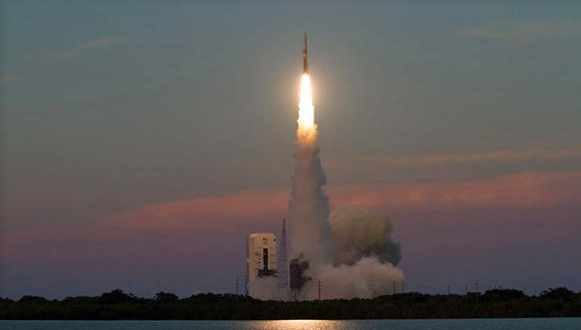A replacement Global Positioning System spacecraft for the world’s best-known satellite constellation ascended into orbit Friday night aboard a Delta 4 rocket in a spectacular sendoff at sunset.
Igniting its main engine and twin solid rockets at 8:03 p.m. EDT, the 205-foot-tall vehicle lifted off on 1.2 million pounds of chest-thumping thrust.
The launch has been delayed a day by inclement weather.
The GPS IIF-6 spacecraft, built in Boeing’s El Segundo satellite facility, is the sixth of 12 new satellites that will replenish the government’s satellite navigation system.
The first IIF satellite launched in 2010. GPS-IIF-5 went up in February.
The Air Force has commissioned Boeing to produce all 12 of the IIF fleet, which is the latest generation of GPS satellites. The new system will become fully operational in 2016, once the other six satellites are up and running.
GPS provides three-dimensional positioning, speed and timing information 24 hours a day in all weather conditions. It’s funded with tax dollars, which is why it’s free to use. It can also interact with other GPS systems around the world, such as Europe’s Galileo, China’s Compass, India’s IRNSS, and Japan’s QZSS.
The new and improved IIF constellation promises greater accuracy for military and commercial use and a new civilian L5 signal to help with aviation and search-and-rescue operations. Boeing has launched two-thirds of the more than 60 GPS satellites that have gone up since the program was created in 1974.
Lockheed Martin is already working on the fifth generation of GPS satellites, which will go online about a decade from now.
Agencies/Canadajournal
 Canada Journal – News of the World Articles and videos to bring you the biggest Canadian news stories from across the country every day
Canada Journal – News of the World Articles and videos to bring you the biggest Canadian news stories from across the country every day



